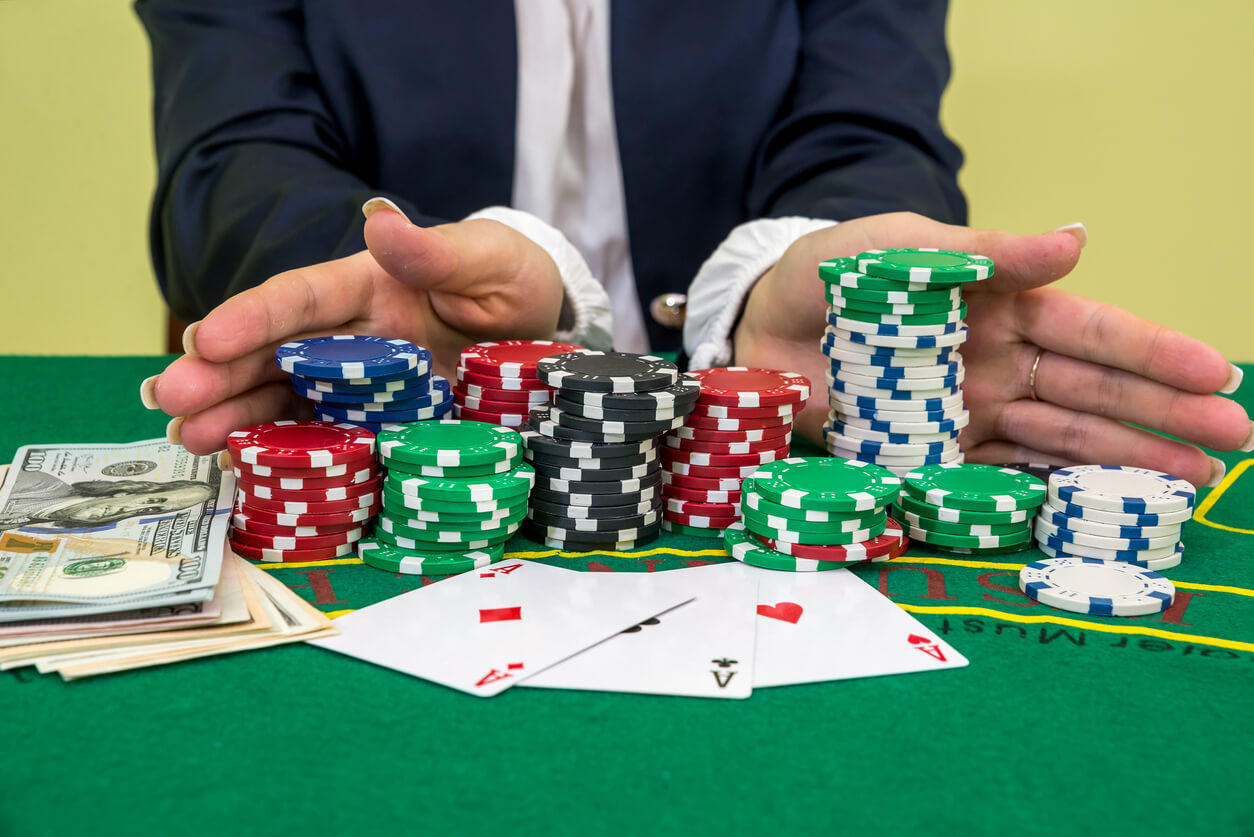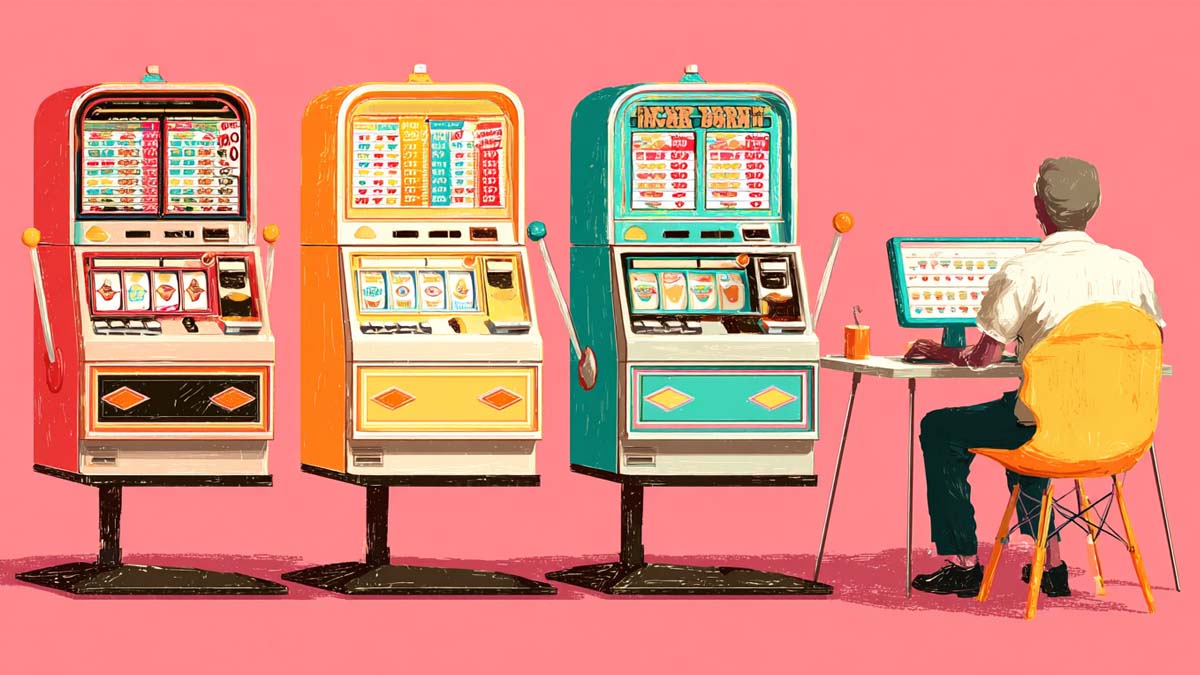Casino Bankroll Management: Definitions & Best Strategies
Casino bankroll management has been increasingly important, as gambling becomes a more popular form of entertainment. Without an appropriate strategy, it’s easy to lose control and face financial stress. This PeakyCasino guide explores 9 tips and 4 common systems to help you manage your funds more effectively.
What Is Casino Bankroll Management?
Bankroll management in casinos is the process of controlling and allocating your gambling funds to ensure responsible play and maximize your gaming experience.
Specifically, you set a clear budget for how much you can afford to spend on casino games (blackjack, craps, roulette, etc.), track your wins and losses, and decide how much to bet in each session. Or, when using Bitcoin for wagering, you account for potential value fluctuations in the cryptocurrency.
This practice is extremely crucial if you want to maximize your chances of winning without jeopardizing your finances. Let’s discuss it in more detail in the next section.
Why Casino Bankroll Management Is Important
Without a clear online casino bankroll management strategy, it’s easy to overspend and deplete your funds faster than expected. Over time, you would turn what should be an enjoyable activity into a financial problem.

You need casino bankroll management to avoid overspending (Source: indiantextilejournal.com).
Good fund management, on the other hand, ensures you keep your finances in check and only gamble with money you can afford to lose. It’s key to responsible gambling and preventing gambling addiction. Suppose you set aside $100 for a gambling session; you divide it into smaller bets to maximize playtime and reduce the risk of losing it all in one go.
Plus, by sticking to a budget, you also prevent emotional decisions (e.g., increasing your bets after a loss to “win it back” or letting your fear take hold when betting) which often leads to mental stress and even greater losses. A bankroll management strategy controls your emotions and helps you know when to take a break as well as make more informed betting decisions.
How Does Bankroll Management Work?
Bankroll management involves setting a budget for gambling (depending on the type of game and your personal goal) and then using it to ensure you play responsibly without financial stress.
Do Only Pros Need Bankroll Management?
No, bankroll management is not just for professional gamblers. It’s essential for everyone who gambles, including beginners. Specifically, pros use it to sustain long-term play and protect profits, while casual players need it to prevent overspending and make their gambling experience more enjoyable.
How Much Bankroll Is Needed for Casinos?
The amount of bankroll you need depends on your gambling goals, game choice, and risk tolerance. Nevertheless, a general rule is to have at least 20 to 50 times your average bet. For instance:
- You should have a bankroll of $100 to $250 if you plan to bet $5 per game of blackjack.
- For high-volatility games like slots, consider a larger bankroll, as wins are likely less frequent.
Beginners should start with smaller amounts they’re comfortable losing, such as $50 to $100, and gradually increase their bankroll as they gain experience and confidence. Keep scrolling to learn about 9 common tips.
9 Tips for Casino Bankroll Management
To effectively manage your casino bankroll, set a clear budget, divide it into smaller portions for each session, and stop playing once you reach your betting limits. Keep bets between 1% to 5% of your bankroll.
Setting A Budget
The first step in bankroll management is setting a clear budget for your gambling activities.

First, set a clear budget.
Decide how much money you are comfortable losing without affecting your personal finances. Then, allocate a specific amount for the week or month and divide it into smaller portions for each session.
For instance, you set aside $50 per week if your budget is $200 for the month. Always stop playing when you reach your limit, avoiding the temptation to spend more.
Choosing Low House Edge Games
To stretch your bankroll, choose games with a low house edge (or high RTP – Return to Player). They are games where the casino’s advantage over the player is smaller, increasing your chances of winning.
Blackjack, for example, has a house edge as low as 0.5% with proper strategy. Meanwhile, roulette’s edge ranges from 2.7% (European) to 5.26% (American). Research the house edge of games before playing to maximize your potential returns.
Below are 8 other card games and table games with typically high RTP:
| Game | Average RTP |
| Video Poker (Jacks or Better) | 99.5% |
| Baccarat (Banker Bet) | 98.94% |
| French Roulette | 98.65% |
| Craps (Pass/Don’t Pass) | 98.6% |
| Texas Hold’em Bonus Poker | 98.18% |
| Blood Sucker (Slot game) | 98% |
| Pai Gow Poker | 97.15% |
| Three-card Poker | 96.63% |
Choosing The Right Games
It’s important to select casino games that align with your skills and risk tolerance.
Skill-based games like poker and blackjack often provide better odds if you know the strategies. In contrast, luck-based games (roulette or slots) offer excitement but come with higher volatility.
Utilizing Casino Bonuses
Bonus hunting is a great way to boost your bankroll. However, they come with specific conditions, such as eligibility for games or wagering requirements (e.g., 20x the bonus round), so always read the terms and conditions carefully.
Or, for beginners, consider looking for promotions like welcome bonuses, free spins, or comp points, which allow you to play more without risking additional funds. For detailed advice, visit our guide on online casino bonuses.
Setting A Betting Limit
Always bet within 1% to 5% of your total bankroll per game or hand.
For instance, your bets should range from $2 to $10 if you have $200. This approach ensures you sustain your play over more rounds and reduces the risks of running out of funds quickly. Otherwise, larger bets usually lead to quicker losses, especially in games with higher volatility, like slots.
Tracking Progress and Losses
Keep a record of your gambling activity, including the amount wagered, wins, losses, games played, and dates.
This meticulous tracking is essential for improving your performance and managing your bankroll effectively. That way, you find it easy to analyze patterns and understand where you are succeeding or losing money. The more data you collect, the clearer the patterns become.
To ensure accuracy and consistency, use a dedicated spreadsheet (like Excel or Google Sheets) or a tracking app designed for gamblers. Log each game, bet size, and result in real time; from there, the data highlights where you should adjust your focus.
Suppose you notice consistent losses in slots but better returns in blackjack. In that case, consider shifting your focus to blackjack instead. Tracking also provides a clearer picture of whether you are staying within your budget.
Mapping Out Your Withdrawal Strategy
Establish a withdrawal plan to protect your profits. We suggest withdrawing a portion of your winnings when you hit a certain profit target, such as $100 from a $50 deposit.
Avoid reinvesting all your winnings into further bets, as that increases the risk of losing it all. Rather, you should set withdrawal milestones to guarantee you leave with something, even if luck turns against you later.
Handling Losses Gracefully
Losses are a natural part of gambling, so it’s vital to manage them with composure.
Accept that you can’t win every time, and resist the urge to chase losses by increasing your bets impulsively. Instead, take a break, reassess your strategy, and stick to your budget. Plus, maintain a calm mindset to prevent emotional decisions that lead to even bigger losses.
Staying Disciplined
Lastly, discipline is the foundation of all bankroll systems. Set clear limits on your time, spending, and behavior while gambling, and stick to them. Do not succumb to emotional or irrational decisions (e.g., betting more after a loss or even a win).
Most importantly, you must ensure gambling doesn’t interfere with other aspects of your life, including work, relationships, and personal responsibilities. That’s the only way to keep gambling a fun and controlled activity in the long run.
Next, let’s discuss the recommended size of your gambling bankroll.
How Much Should Your Gambling Bankroll Be?
There is no definitive answer. Your gambling bankroll should be tailored to your personal goals, budget, and preferred games.
We suggest setting aside an amount of money you can comfortably lose without impacting your personal finances. For instance, consider allocating $200 for casino play if your monthly entertainment budget is $500. And again, always divide your bankroll into smaller portions to maintain control.
How to Easily Double Your Money At A Casino
There’s no guaranteed way to double your money. Nevertheless, the four strategies below usually offer better odds:
- Play low house edge games: Games like blackjack (house edge ~0.5% with optimal strategy) or baccarat’s banker bet (~1.06%) give you the best chance of doubling your money. Learn basic techniques for games like blackjack to maximize your odds.
- Use the Martingale strategy carefully: The Martingale strategy involves doubling your bet after every loss. For instance, your next bet is $20 if you bet $10 on roulette and lose. However, it’s risky and requires a sizable bankroll to withstand potential losing streaks.
- Opt for short gambling sessions: The longer you play, the more the casino’s edge works against you. To maximize your chances of doubling your money, play short sessions and leave as soon as you reach your profit target.
- Focus on tournament play: Casino tournaments, like poker or slot competitions, often have fixed entry fees with the potential for large payouts. When playing a set amount to join, you limit your initial investment while having the chance to win a significant prize pool.
- Grow your bankroll: Expected Value (EV) measures the average amount you can expect to win or lose per bet over a long time. A positive EV (+EV) indicates a profitable bet, while a negative EV (-EV) suggests a losing one. Focus on +EV decisions consistently, manage your bet size carefully, and avoid high-risk wagers.
Another tip is to choose the right bet-sizing strategy to seize your winnings.
3 Different Bet-Sizing Strategies
The three bet-sizing strategies are flat betting, progressive betting, and adjustable betting. Flat betting involves placing the same amount on each bet. Progressive betting increases your bets to maximize streaks. Adjustable betting allows flexible wager changes.
Flat Betting
Flat betting means you stick with the same bet size for every round, whether you are losing or winning. For example, you continue betting $5 on each round if you set your flat bet at $5.
This method is simple to execute and helps maintain control over your bankroll; hence, we recommend it for beginners. While flat betting doesn’t maximize potential profits during a winning streak, it minimizes losses and ensures consistent play over longer sessions.
Progressive Betting
Progressive betting adjusts your bet size based on whether you win or lose. Two common progressive systems are the Martingale and Paroli:
- Martingale system: As mentioned earlier, you double your bet after every loss to recover previous losses and make a small profit with the next win. Suppose your first bet is $5, and you do not win; your next bet is $10, then $20, and so on.
- Paroli system: This system increases your bet after each win to capitalize on winning streaks. For example, you increase the next bet to $10 if you start with a $5 and win. The risk is smaller than the Martingale because you’re reinvesting your winnings instead of chasing losses.
Although progressive betting potentially amplifies profits during streaks, it still requires discipline and a clear stop-loss strategy to avoid depleting your bankroll.
Adjustable Betting
Adjustable betting allows you to modify your bet size based on the flow of the game or your performance. This approach is more flexible and relies on analyzing the situation to make informed decisions.
For instance, you start with a small bet of $2 to test the waters and increase your bet to $10 as you gain confidence or experience a winning streak. Conversely, you reduce your bet size if you face consistent losses to protect your bankroll.
Overall, adjustable betting requires more attention and decision-making than the other two types of betting (flat and progressive). Nevertheless, it offers better control over your funds. You have more capability to capitalize on favorable situations while minimizing losses during unfavorable ones.
Besides the three bet-sizing strategies, pay attention to the common bankroll management systems as well.
4 Common Bankroll Management Systems
The four systems are the Kelly Criterion, the D’Alembert Strategy, the Oscar Grind Strategy, and the Fibonacci Model. Kelly uses a mathematical formula. D’Alembert adjusts bets gradually. Oscar increases bets after wins. Fibonacci bases bet sizes on the Fibonacci sequence.

Understand Bankroll management systems to apply them at the right time.
Kelly Criterion
The Kelly Criterion is a mathematical bankroll management system that helps players determine the optimal percentage of their bankroll to wager based on the odds and probability of winning. Use the following formula: k% = (bp – q)/b, where:
- k% = percentage of your bankroll to wager
- b = odds multiplier (decimal odds minus 1)
- p = probability of winning
- q = probability of losing (1 – p).
For instance, when you estimate a 60% chance of winning a bet (p = 0.6) with odds of 2.5 (b = 2.5), the calculation suggests betting 33% of your bankroll.
D’Alembert Strategy
This gradual progression system is designed for even-money bets (such as red/black in roulette). After every loss, you increase your bet by one unit, and after every win, you decrease it by one unit.
For example, your next bet in the second round is $10 if you start with a $5 bet and lose. When you win this second round, you reduce your next bet back to $5. The strategy works best when the betting odds are 2.0 or higher and limits initial bets to 1/20th of your bankroll to manage losses effectively.
Oscar Grind Strategy
The Oscar Grind strategy refers to a positive progression system suitable for games with evenly distributed outcomes, such as baccarat or roulette. The goal is to make a net profit of one unit per betting cycle.
Players start with a bet of 1 unit. When they win, they continue betting the same amount. After a loss, the bet remains the same, but after a subsequent win, they increase the next bet by 1 unit. The progression continues until they achieve a net gain of 1 unit, at which point the cycle resets.
For example:
- Bet 1 unit → Lose → Bet 1 unit → Win → Increase bet to 2 units.
- When you win the 2-unit bet, your total profit for the cycle is 1 unit, and you restart.
Fibonacci Model
The Fibonacci Model uses the Fibonacci sequence to determine the bet sizes. In this sequence, each number equals the sum of the previous two (1, 1, 2, 3, 5, 8, etc.).
You start with a bet of 1 unit. After a loss, move to the next number in the sequence for your next bet. After a win, move back two steps in the sequence. For example:
Bet 1 unit → Lose → Bet 1 unit → Lose → Bet 2 units → Lose → Bet 3 units → Win → Bet 1 unit.
Instead of sticking to just one strategy or bankroll management system, adjust your approach to the game at hand.
Bankroll Management for Each Specific Game
To manage your bankroll effectively, keep in mind the specific type of game you are playing (or want to play) as well:
- Poker: A general rule is to have at least 20-50 buy-ins for your chosen stakes (e.g., $500 to $1,250 for $25 buy-ins). Always adjust your stakes if your bankroll drops below the required number of buy-ins to avoid going broke.
- Cash games: Set a clear stop-loss limit to prevent chasing losses (e.g., stop playing if you lose 10% of your total bankroll in one session). Bet sizing should be consistent; typically, no more than 5% of your bankroll should be risked on a single hand.
- Tournaments: The variance is much higher than in cash games, so it’s critical to have a larger bankroll (e.g., at least 100 buy-ins for your chosen tournament sakes). Use satellites (*) and freerolls (**) to build your bankroll and reduce risk while aiming for larger prizes.
(*) satellites: Smaller, lower-cost tournaments where the prize is an entry ticket to a larger, higher-stakes tournament.
(**) freerolls: Tournaments that cost nothing to enter but offer real-money prizes or entry tickets.
FAQs
How do I build a casino bankroll?
Can bankroll management help recover from a losing streak?
How do I stay within my bankroll boundaries?
How much of your bankroll should you bet a day?
What is the number one rule of gambling?
How much does the average gambler spend at a casino?
How much does the average person lose at a casino?
How much does the average gambler make a year?
How much money should you take to a casino to play slots?
Which betting patterns should be avoided?
What is the most profitable game in a casino?
What is the Kelly Criterion Model for sports betting?
What is the Martingale betting system?
What is the average casino payout?
Resources:
- Take Control of Your Gaming Experience (sigma.world).
- Strategies for Managing High Roller Casino Bankroll in the U.S. (tntnj.com).
- The Art of Bankroll Management in Casino Gambling (il-borgia.it).
- What’s The Best Size for Slots? (firstcomicsnews.com).
- American Attitudes Towards Gaming (Americangaming.org).
- Survey: 62% of Americans Say They Gambled (NerdWallet.com).
- Gambling Addiction Statistics & Facts 2024 (quitgamble.com).
- What Is The Average Professional Gambler Salary by State? (ziprecruiter.com).
- Slot Machine Payback Statistics (americancasinoguidebook.com).
- The Most Profitable Casino Games (casinolifemagazine.com).


